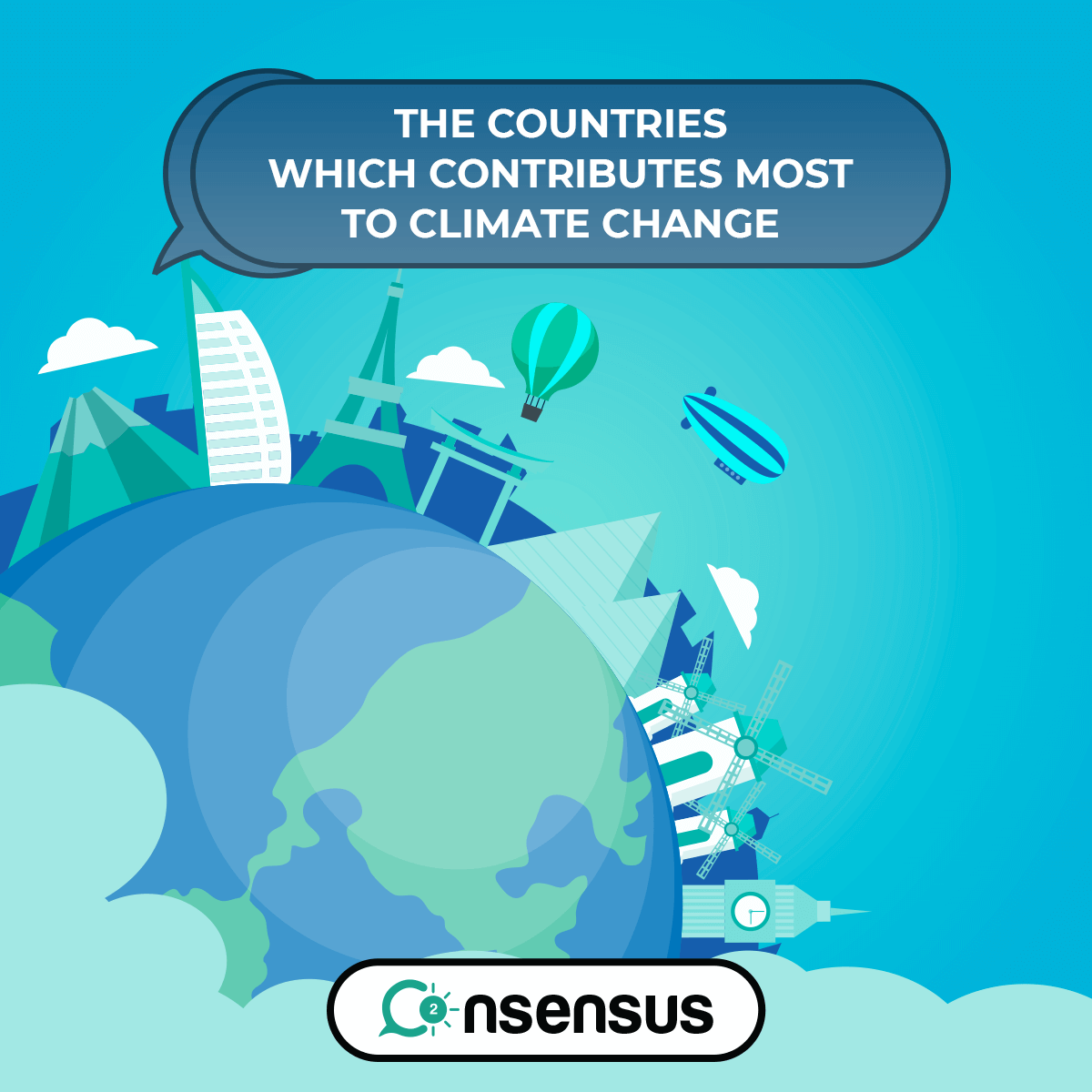Humans are pumping more carbon dioxide into the atmosphere at an accelerating rate. But climate change is a cumulative problem, a function of the total amount of greenhouse gases that have accumulated in the sky. Some of the heat-trapping gases in the air right now date back to the Industrial Revolution. And since that time, some countries have pumped out vastly more carbon dioxide than others.
Climatic injustice takes two forms. First there is the exposure side namely, how vulnerable we are to the effects of climate change. Of course people who live in developing countries are far more vulnerable to temperature increases, water distress, rising food prices, etc., than affluent people living in developed countries: and the second is who contributes most to climate change.
Cumulative Emissions are the Critical Factor Behind the Warming We’re Experiencing
It’s not simply the rate of our output of heat-trapping gases that changes the global climate; the total amount of carbon dioxide emitted is a critical factor as well.
While atmospheric carbon is gradually absorbed by the ocean and plants, a large fraction, about 20 percent, lingers for millennia. That means a big chunk of the greenhouse gases emitted at the dawn of the Industrial Revolution is still heating up our planet today. If we were to magically cease emitting all greenhouse gases at once, the planet would likely continue warming for a period of time. This leads to the next point.
The United States Has an Outsized Role in Global warming, Despite Recent Progress
When it comes to total greenhouse gas emissions, the United States does a behind-the-back, through the legs, over China and the Soviet Union.
In other words, the largest share of global greenhouse gases emitted since the Industrial Revolution comes from the US. And with great emissions comes great responsibility to mitigate climate change.
And yes, the United States has already made some of the largest cuts to its greenhouse gas emissions of any country in the world. Between 2005 and 2015, US emissions fell 11.5 percent, largely due to switching to less carbon-intensive fuels like natural gas. However, US energy consumption hit a record high last year, and emissions are on the rise again after years of decline.
Just two countries, China and the US, are responsible for more than 40% of the world’s CO2 emissions.
With CO2 levels still on the rise, being able to track the global emissions hotspots is becoming more important than ever. Before the industrial revolution, levels of atmospheric CO2 were around 280 parts per million (ppm). By 2013, that level had breached the 400ppm mark for the first time.
On 3 June 2019 it stood at 414.40ppm. Fifteen countries are responsible for more than two thirds of global CO2 emissions. They are mentioned in the following table.
There are huge disparities between the world’s top 15 CO2 emissions-generating countries. China creates almost double the emissions of second-placed US, which is in turn responsible for more than twice the level of third-placed India. Collectively, the top 15 generate 72% of CO2 emissions. The rest of the world’s 180 countries produce nearly 28% of the global total – close to the amount China produces on its own.
Of course, aggregating emissions by country is just one way of assessing the problem and working out how to counter it. The per capita figures tell a different story.

Source: World Economic Forum
Looking at per capita figures rather than national-level totals could help bring the reality of the climate crisis closer to individuals. For example, a person may feel their decision to use less-polluting forms of transport is pointless in comparison to the colossal Chinese and American CO2 figures.
Consumption Footprints
Imported and exported goods add another layer of complexity to the equation. Many commentators argue that focusing on where emissions are produced is unfair, because much of the carbon output of countries such as China are generated as a result of producing goods that are ultimately consumed in richer nations. If emissions are measured in terms of consumption rather than production (that is, each country’s exports are excluded from its footprint, and its imports added) the tables turn yet again.
This leads to arguably the best measure of current responsibility for climate change: the total carbon footprint of the average person in each nation.
Fostering Collaboration
Four years ago, in Paris, nearly every country in the world committed to limiting global warming to well below 2 degrees Celsius compared to the pre-industrial average, ideally 1.5 degrees Celsius. We have not yet identified all of the actions necessary to get there, but where and how food is produced and how land stewardship is supported or encouraged can deliver a significant part of the solution.
Fostering collaboration between the food sector and finance, technology and scientific communities is the best way to make progress.
